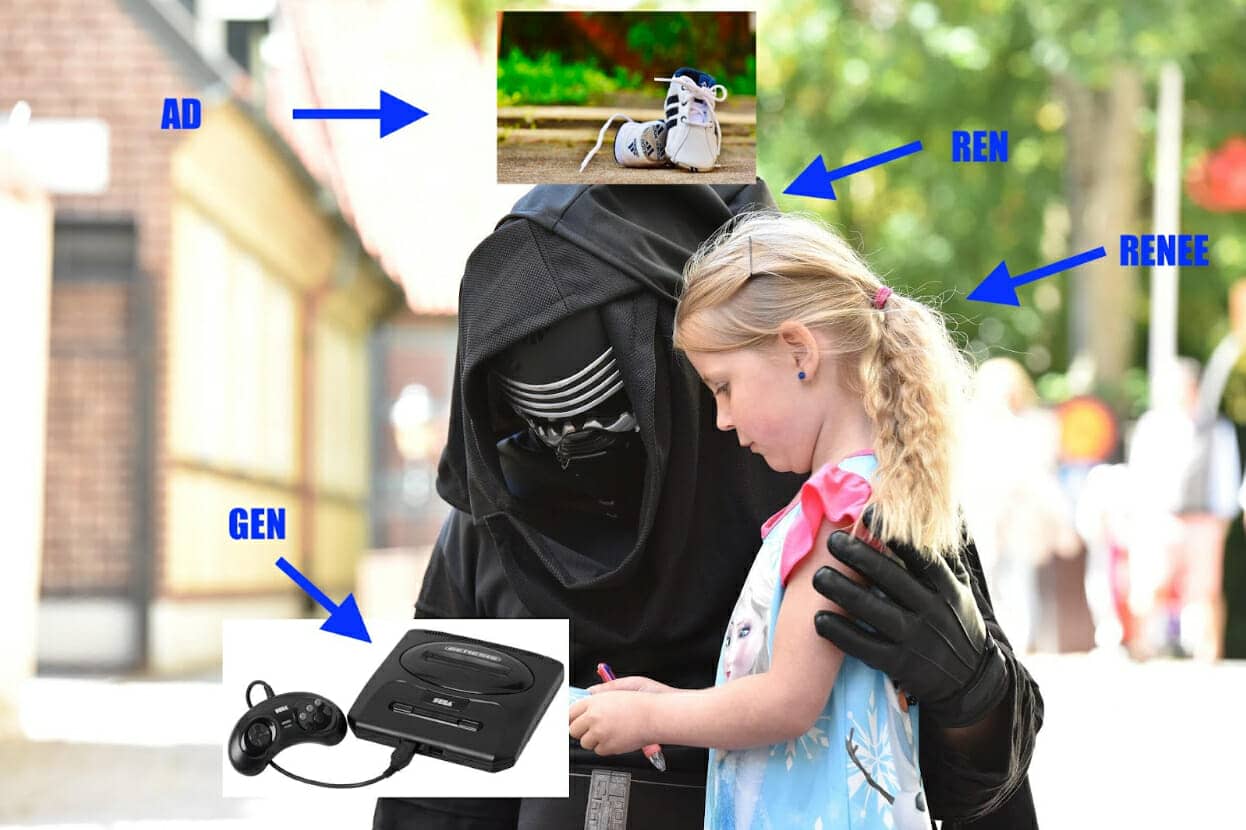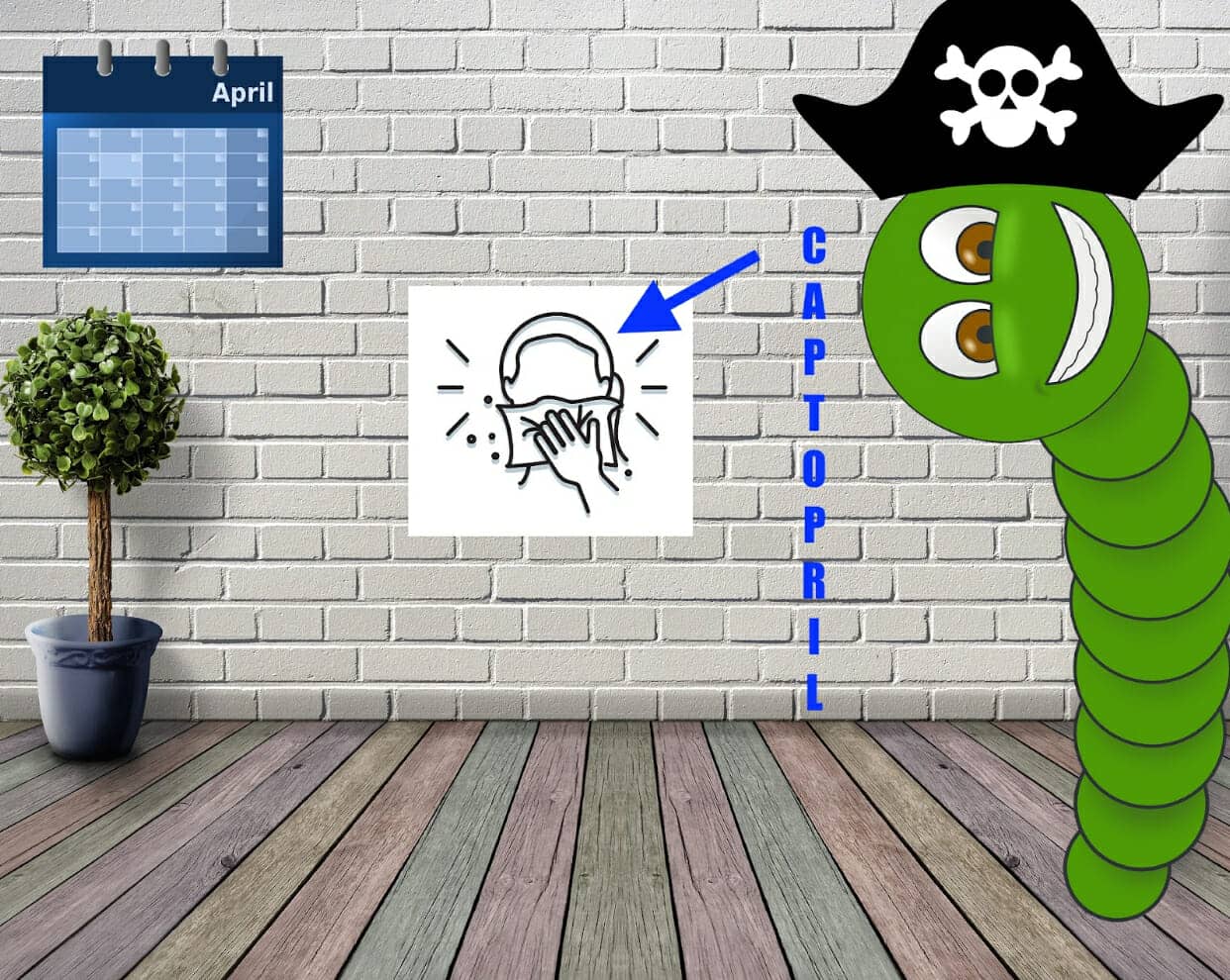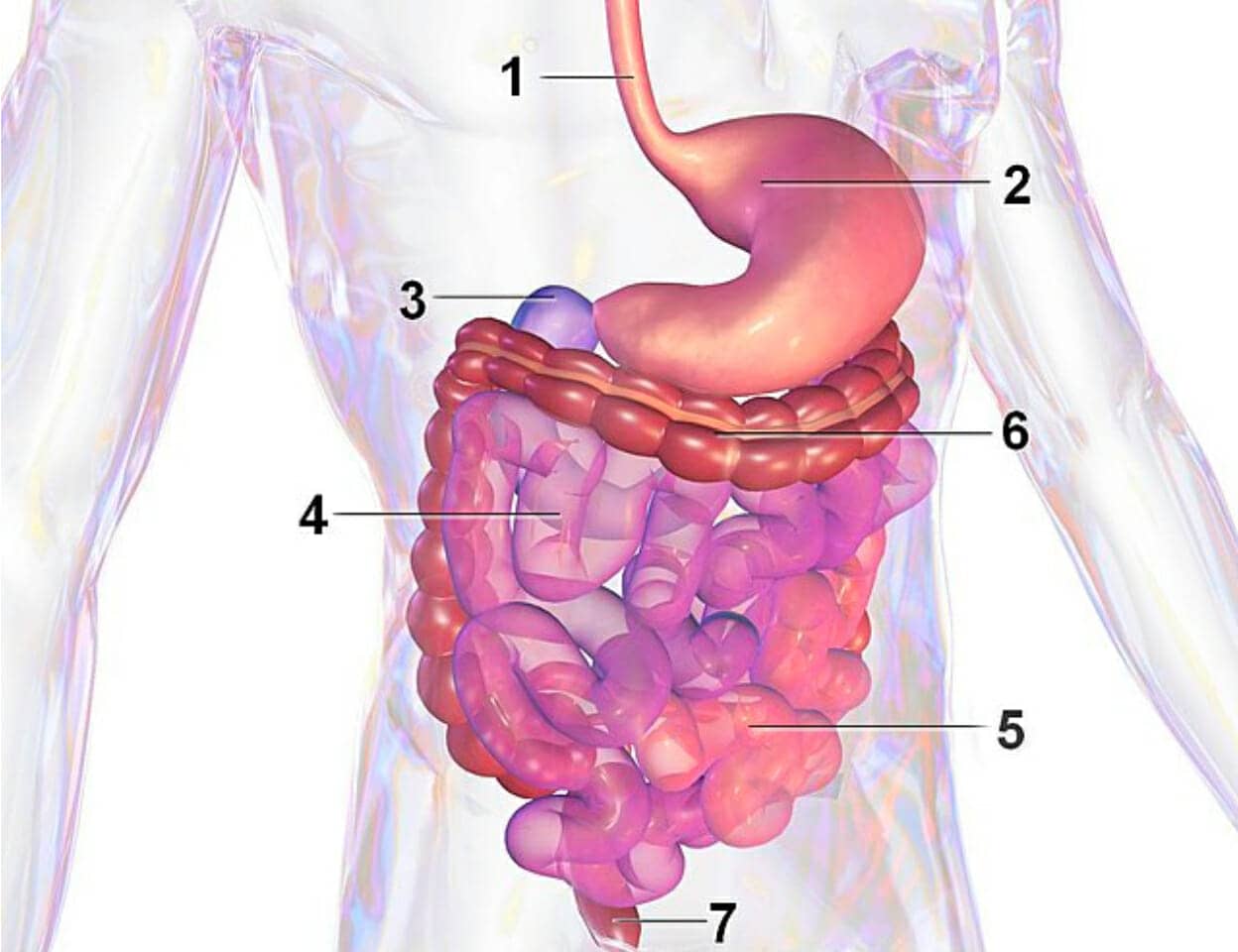 Good medication mnemonics are hard to find, aren’t they?
Good medication mnemonics are hard to find, aren’t they?
Even harder than the topic of pharmacology itself.
Which is why you’re stressed out, confused and wishing someone could just show you how to remember medications for nursing, prescribing as a doctor or working in a pharmacy.
Good news:
On this page, I’m going to share with you not only some powerful mnemonic examples for different drugs and what they do to the brain and body.
I’m going to teach you how to assign your own mnemonics.
Not in a way that will feel like work.
But in a way that is easy, fun and helps improve your overall memory.
Sound good?
Let’s dive in!
9 Effective Pharmacology Mnemonics (And How to Use Them)
As we go through these mnemonic devices and examples, here’s a simple principle to understand:
Most mnemonic examples you’ll find on the Internet involve vague and generic associations.
In fact, most people teaching memory techniques in books, courses and free materials suffer from this problem.
The simple shift you’ll learn to make today is to make concrete and specific.
That way, you’re using information that is already in your memory to make associations.
And that’s how using drug mnemonics becomes faster, easier and so much more fun.
One: Adrenergic Agonists
The first memory task with each pharmacology mnemonic is to memorize the name.
To make this simple, let me introduce you to two things:
- Word division
- Pegwords
Word division works by letting your mind settle on just part of the word, such as “ad.”
Then, thinking about specific associations is much easier:
Adidas shoes come instantly to mind. This is a specific and concrete association.
For “rene” you might think of the concept of renewal and maybe a person you know named Renee or Ren and Stimpy.
Just imagine having Ren or Renee trading Adidas shoes for energy to help you remember the word Adrenergic. You could even use Kylo Ren from the Star Wars mythology.
You could even use the story and linking method to throw in ideas around addiction and being allergic to get more of the sounds in place.
To understand how the story and linking method might work for this term, look at the example above:
We have Adidas shoes balancing on Kylo Ren’s head as he’s talking about addiction to playing Sega Genesis with a person named Renee.
From there, you just add on more associations for the “agonist” part of the term. And if you were to use someone like Kylo Ren, he’s an “antagonist” in parts of the stories he appears in.
Neat how medical mnemonics work, isn’t it?
Now, I know there are more details for this term than just its name. But let’s pick up how to memorize even the most granular details as we go through a few more mnemonics for pharmacology.
Two: Thyroid Drugs
Now that you have a model for memorizing the name of any kind of medication, let’s look at how to memorize what different kinds of drugs do.
Thyroid drugs, for example, speed up metabolism. They may give energy or increase body temperature.
So if you needed to remember that sodium ipodate might be used in the management of hyperthyroidism in subacute thyroiditis, here’s an example mnemonic:
Imagine Superman asking Wonder Woman out on a date to eat some sodium.
She responds that she suffers from hyperthyriod issues and prefers to eat potatoes on a date. The sound of “I” “potatoes” and “date” help you recall this term. The story helps you remember why the drug is given.
To deal with a drug like Triiodothyronine for hypothyroid issues, you could extend the story.
Except now you include associations that help you remember these terms. The trick is to make the associations as specific as possible. So if you’re not familiar with a tripod, use a tricycle you remember from your youth instead for the “tri” in triiodothyronine.
Three: Acronyms for Pharmacology Mnemonics
You’re probably used to seeing acronyms for pharmacology. Words like:
- CAPTOPRIL for ACE inhibitor side effects
- PC BRAS for drugs that decrease the effectiveness of Warfarin
- SAMS for lidocaine toxicity
Although such acronyms can work well, you can make them work better using the concrete associations we’ve been discussing.
Take CAPTOPRIL for example. It stands for:
- Cough
- Angioneurotic oedema
- Proteinuria
- Taste disturbance/ Teratogenic in 1st trimester
- Other (fatigue, headache)
- Potassium increased
- Renal impairment
- Itch
- Low BP (1st dose)
A much easier way to remember this medical mnemonic and all its subparts is to get specificity involved plus a Memory Palace.
A Memory Palace is one of 20 memory techniques you can combine for maximum effect.
It works by selecting a room and strategically placing associations in it.
To make a medical acronym like CAPTOPRIL easier to memorize, you could imagine a caterpillar with a pirate captain’s hat crawling up the same wall that has a calendar for April on it.
This already makes the strange acronym much more memorable. It helps you give it a sense of story as well.
From there, you just need to add more images for each part of the acronym. Since “C” is “cough,” you could imagine someone coughing, ideally someone with a name that starts with “C”.
Four: Pharmacology of the GI Tract
Sometimes you need to remember information that has multiple parts.
When this is the case, you can use number rhymes to help.
Let’s say that you want to remember that magnesium hydroxide is a common part of antacids.
You could place this fact on the esophagus as your first fact.
Since the number rhyme method tells us that 1 is a bun, you could imagine Magnum PI is trying to hide a bunch of Magnum .44 magnums inside of buns in this area. The word “hyde” sounds like hydroxide, so this action helps you remember that part of the term.
Next, you can use a pair of shoes to memorize facts about omeprazole and proton pump inhibitors. Because two rhymes with shoes, you can imagine a gas pump filling shoes with gastric fluid.
Whenever you come across numbers or numbered parts, this mnemonic system is great. You can learn more about how to use this technique by reading this number rhymes tutorial.
Five: Dosage Mnemonics
Often, you’ll need to learn about dosages and how they apply to different age groups.
For this learning task, it’s useful to have the Major System and a PAO System.
These memory systems are very cool because they help you have image associations for every number.
For example, if you have to give 86 ml to a 22 year old male, you can readily memorize those numbers by using images like fish and a nun.
This is because in the Major System, 8=f, 6=sh and 2=n. The PAO system helps you combine those into highly memorable words like fish and nun.
There are a few nuances to developing these mnemonic systems, so I encourage you to check out my tutorials on them. Combined with what you’ve already learned and a Memory Palace, you’ll be memorizing thousands of data points before you know it.
Six: Drugs For Ventricular Arrhythmias
Amiodarone and sotalol are used to to help with this condition.
To memorize Amiodarone, I would start by thinking of my cousin Amy. If you don’t know someone with this name, you could think of Amway, or think of anyone you know whose name starts with A pretending to be Italian and singing “Amio.” For the “darone” part, you could think of a drone carrying away the person you used for the first part of the drug.
For sotalol, I would personally think of my friend Sophie growing taller and taller while eating a lolly pop. This kind of mnemonic image is weird, and that’s the point when you want to remember things better.
Seven: Drugs For The Nervous System
The list for drugs that treat this part of your patients is quite long.
But following the principles you’ve already discovered on this page, here’s an example I created based on two challenging nervous system drugs.
For Moclobemide, I thought of Mo from The Simpsons closing a door with a bed on it that was hiding Homer.
For Neostigmine, I imagined Neo from The Matrix reading Stig Larsson novels in a coal mine.
Eight: Emergency Drugs
Adenosine and Atropine are amongst the many drugs emergency medical staff need to know.
If you know Adel, you can imagine here with a big nose growing a sign out of it.
For Atropine, you’ll probably find it easy to mentally combine the @ symbol with a pine tree. If you bring the tree to life by humanizing it, you can even have it acting out the symptoms and side effects you need to remember for this drug.
Nine: Drugs For The Gastrointestinal System
Metoclopramide is one of the hardest drug names to memorize in this list.
But if you can imagine Superman in Metropolis or the rapper Method Man, you’re halfway there. You just need to come up with something for “pramide.”
Often for “pram” sounds I use the baby carriage (or pram) in the epic and classic Odessa step sequence from the movie, Battleship Potemkin. If you take a moment to watch that sequence on YouTube, you’ll never forget the image either and be able to use it yourself.
For “ide,” Dr. Jeckyll and Mr. Hyde come to mind. From there, it’s just a matter of combining the associations, popping them into a Memory Palace and putting in some spaced repetition.
Proper Mnemonics For Pharmacology Pay Off
Chances are that the medical mnemonics you’ve just discovered are a lot different than others you’ve encountered online by people offering to help you rapidly learn medical terminology.
You might be skeptical that this approach is going to work for you. If that’s the case, feel free to read these testimonials. Many of them come from medical professionals who have gone through the Magnetic Memory Method Masterclass and used it to commit a variety of medical terms to memory.
If you’d like more information on how these techniques can help you remember more medical information, please consider completing my FREE Memory Improvement Kit:
Sure, using mnemonics at this level requires a bit of setup.
But it will pay off quickly.
If you’re willing to spend just a little time upfront, you’ll save so much more in the end.
Feel free to post any questions or requests for more examples in the discussion area below.
And if you have any mnemonics of your own that have helped you, please share them.
One incredibly powerful win is to share what you’ve learned. It will automatically get that knowledge deeper into your own memory.
And that’s what will make you an incredible nurse or pharmacologist in the end.
Not just a passing familiarity with pharmacology.
But mastery.
So what do you say?
Are you in?
Related Posts
- Mnemonics, Language Learning And Virtual Memory Palaces In Discussion With Timothy Moser
Two memory skills enthusiasts reveal all.
- Memory Craft: Lynne Kelly On The Potent Power Of Ancient Mnemonics
Lynne Kelly joins the podcast to discuss her new book Memory Craft. We discuss the…
- On Math, The Science Of Mnemonics And Memory Modalities
Candid talk on the science of mnemonics with notes on math and rep systems.









